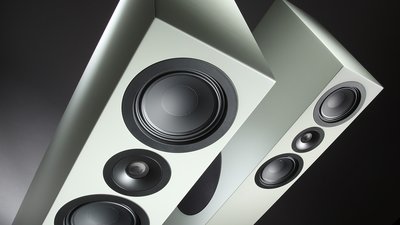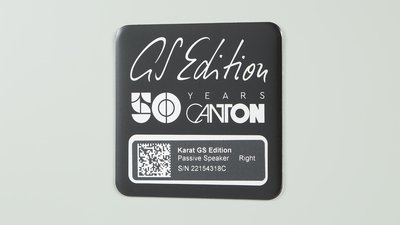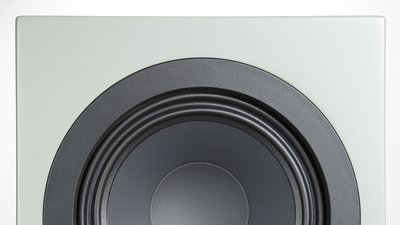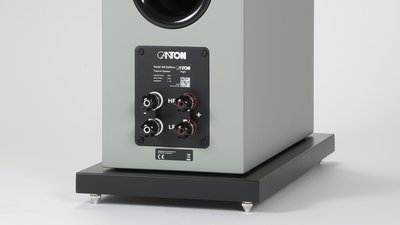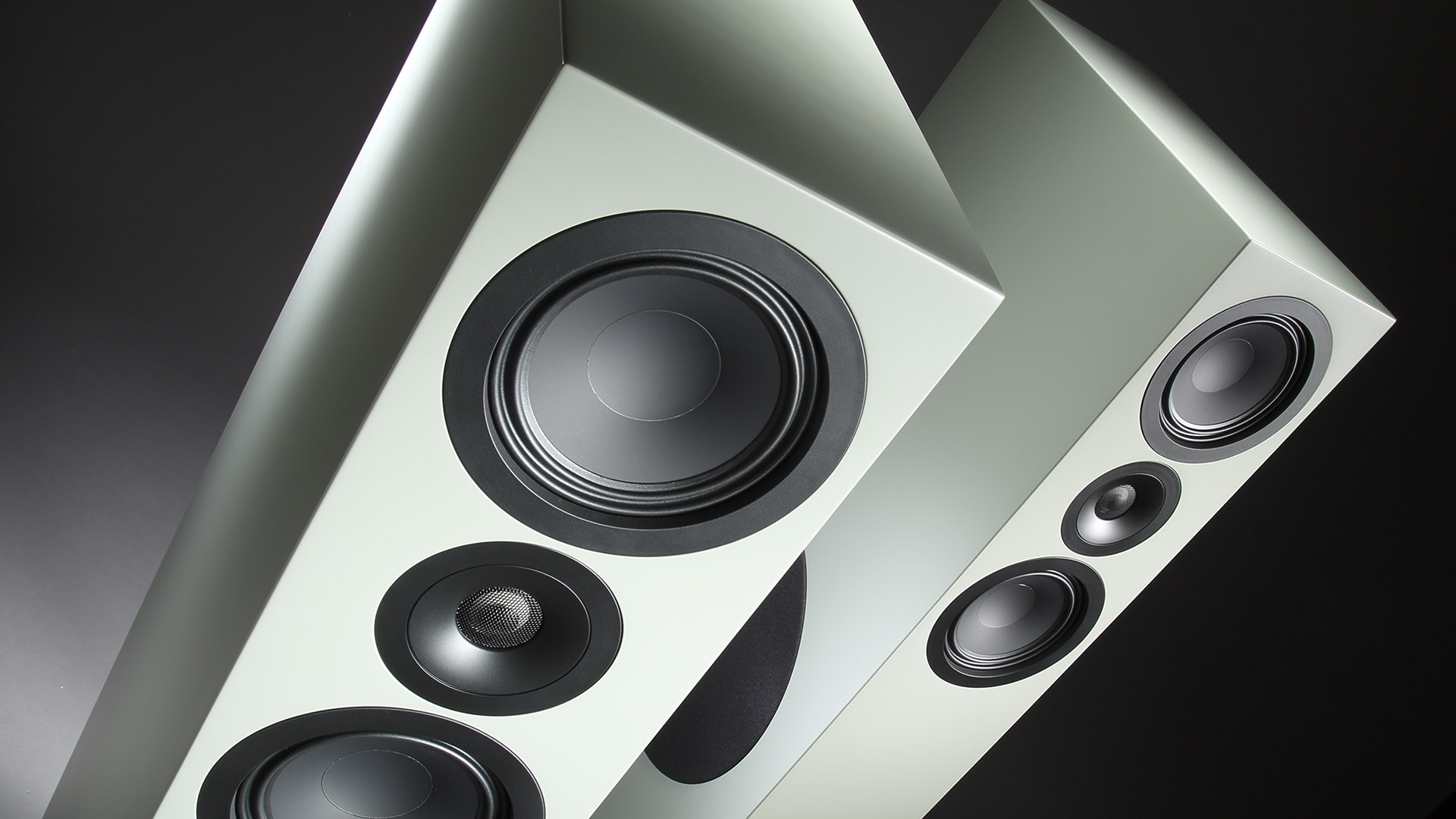
Floorstanding Speaker Test
Canton Karat GS Edition Review
According to Tradition – Canton celebrates its 50th birthday. The company‘s founder Günther Seitz did not miss the opportunity to modernize one of his favorite loudspeakers. That resulted in the elegant Karat GS Edition floorstanding speaker.
To successfully stand your ground on the market for half a century while never giving up the ambition of providing high-quality music reproduction for every budget – Günther Seitz and his team have achieved this rare feat with flying colors. Thanks to high innovative strength, remarkable vertical integration, and a sense for the wishes of customers and emerging trends, the outlook for the future of the family-owned company Canton is more positive than what might be said about some of its competitors.
In the middle of the birthday celebrations of the company, founded on October 17, 1972, the Karat GS Edition, which is almost unchanged from the original from 1972, was now presented. The most noticeable difference in our test models is definitely the finish in – what‘s the right word? – stylish "Dusty Green".
Woofer on the Side
At the time, the original Karat was a pioneer in the field of very slim column speakers with a side-mounted woofer. This enabled the thin housing in the first place and gave many hi-fi enthusiasts full sound from less room-filling speakers. The slim models also withstood the stern looks of the ladies and were thus able to celebrate a warm welcome into the living room at home without long discussions.
Now, 20 years later, the Karat GS Edition is presented. It is a masterful testimony to the fact that – contrary to the opinion of nostalgics and professional complainers that technological progress practically does not exist in hi-fi devices – quite a lot of serious progress is to be found after closer, especially acoustic and technical examination. At 3,500 euros, the speaker‘s current price lies within a range which many hi-fi enthusiasts can still afford or save up for. In return, you now get a speaker that has been completely deconstructed and rebuilt under its classic shell.
And as is only appropriate for a true anniversary model, the speakers are not built in large numbers, but rather limited to exactly 1972 pairs. Which, by the way, is a number that easily exceeds the total annual production of some manufacturers...
If you take a closer look at the GS Edition, you will notice that both the front and the rear differ noticeably from the original model. For one thing, the drivers and the WBT-NextGen bi-wiring connector panel are absolute state-of-the-art. Furthermore, the bass reflex port on the back is designed to optimize flow so that it does not develop its own acoustic presence, even at the high levels usually possible with Canton speakers.
The stable base is coupled to the ground with spikes to ensure the energy transfer happens in a controlled manner and without any risk of droning. With a total weight of almost 30 kilograms, it is obvious that the housing must also be of the stable sort and carry some stiffeners. With that, the power of the drivers is not wasted by housing resonances, but sent as undistorted as possible in the direction of the listeners.
Taking from the Reference K
The drivers not only carry a fancy black finish, but are also partly based on the Reference series – read our review of the Reference 3K here – from a technical point of view. For example, the 25-millimeter dome tweeter of the 3.5-way ported speaker is made of aluminum oxide ceramic. This mixture of materials is low-resonance, light, solid and highly resilient at the same time, without the need for liquid cooling. Of course, many other details contribute to this, from the voice coil to the magnet system or the computer-calculated sound guide.
Taking a look at the two identical 154-millimeter midrange drivers is also very much worth it. It stands out not only thanks to its membrane profile, which the developers have named "Triple Curved Cone", or its black ceramic-tungsten mixture, but also due to its special surround. Material as well as design – of course, again in conjunction with a lot of other technical refinements devised on a computer and verified in extensive listening tests – provide the qualities envisioned by mastermind Frank Göbl. This naturally includes a neutral reproduction of voices and acoustic instruments. For that specifically, one of the two midrange drivers works from 130 hertz to over 3,000 hertz, while its twin takes over starting at 500 hertz, activated via the crossover.
The midrange drivers frame the tweeter in the d‘Apollito – or MTM – pattern. With that, Göbl achieves a high degree of tonal cohesion without sacrificing responsiveness, liveliness and dynamics. The even dispersion behavior has also been optimized for the entire midrange/tweeter spectrum. In order to let them do their work without being disturbed by the woofer, they were given a generously sized private room.
The split crossover also results from considerable effort and strict selection of all components. It adds another not insignificant part to the successful performance that this slim speaker delivers, even in the bass range.
Selection and Material Mix
With a diameter of around 26 centimeters, the woofer already incites a certain amount of respect from the observer due to its dimensions. Especially so when considering the cabinet width is just 18 centimeters, while the speaker remains just under the 1.20 meter mark in height. The membrane responsible for the low frequency range is again made of a mixture of materials, in this case cellulose and graphite, aiming for stiffness with low weight. When needed, this driver also offers plenty of excursion, without linearity, low distortion and reach into the low frequencies – such as most speakers hardly dare to dream of in contrast – suffering in return. To be honest, this is exactly what we expected from Canton.
But all theory is gray, and it is naturally very difficult to get an impression of the sound or even the emotions generated during listening just by looking at or reading the technical description. So we put the speakers, selected in pairs and marked with left and right, into the listening room; set them up with plenty of free space and the woofers facing inwards; provided a decent front end and some rather powerful amplifiers; wired everything carefully and neatly and immersed ourselves into the music.
As might be obvious, this feeling of "immersing yourself into the music" does not work equally well with all speakers or hi-fi systems, and the reviewer‘s current mood is also subject to certain fluctuations. That is indeed one of the reasons why STEREO examines components again and again over multiple weeks. It is also why the reviewer‘s colleagues, who have nothing to do with the test itself, help with listening along the way.
In the case of the Canton Karat GS Edition, however, it was rather easy for us to immerse ourselves in the music and spend a lot of time in our listening room. Indeed, the slim beauties left a powerful impression on us after a short break-in period already. This time, we didn‘t slowly get to know the speakers and their presumed qualities, but rather went straight in with Metallica‘s "Wherever I May Roam" and "The Unforgiven".
At higher levels and with a lot of bass, we wanted to see whether the somewhat poorly produced songs of the rock legends would force us to reduce the volume soon due to screeching, droning or annoyance. However, the Karat skillfully managed to maintain the balance between a powerful bass, transparent midrange and rather mild, low-distortion treble reproduction without choking off the inherent power of the songs.
Afterwards, we decided to go a bit quieter and more relaxed, the volume knob rotated quite a bit towards the left.
After all, most of us want or indeed have to listen on comparably quiet volumes most of the time. As a drummer, Art Blakey always put rhythm at the center of his work, and his "Moanin‘" served as a reference. Drums, saxophone, trumpet, piano and double bass challenged the Karat in terms of tonality, while at the same time precise timing and a lot of emotion were required. Tasks that the speaker from the Taunus region faced quite calmly and which it accomplished skillfully despite a trace of additional warmth in the midrange that we missed.
Emotion and Precision
Italy and its operas are always a delight; and a beautiful recording over a good stereo can captivate and move to tears. "Tosca" by Puccini with Leontyne Price exactly meets these criteria. In this category, the Karat also checked more boxes than one would have expected given the price tag. Choir and stage, solo voices, orchestra – the audience could effortlessly relax and let themselves be carried away in thought to southern lands while giving in to the passion of this musical highlight.
Big band, strings and one voice – Ella Fitzgerald. The Canton immediately revealed why this lady has an undeniable following to this day. If you hear her sing, you almost can‘t help but shudder with delight. And the Karat, despite lacking the very last degree of precision in the bass range as well as definition, again displayed quite a lot of what music lovers all over the world appreciate about this voice. Effortless and natural, with perfect timing and melting in her voice, she proved that she is rightly revered as the undisputed "Queen of Jazz". And the Karat paid tribute to her with extraordinary skill. We congratulate Canton on another all-around successful speaker at an extremely fair price!
Verdict
The anniversary model for the 50th birthday of the German manufacturer remains true to the company tradition: neutral sound, dynamic, reliable across all levels.
Technical Details
Floorstanding speakers (passive)
Canton Karat GS Edition
Price: ca. 3500 € (Last check: 20.10.2022)
Dimensions WxHxD: 23 x 105 x 46 cm
Weight: 28.1 kg
Warranty: 5 years
Manufacturer: Canton
General Data
Measurement Results
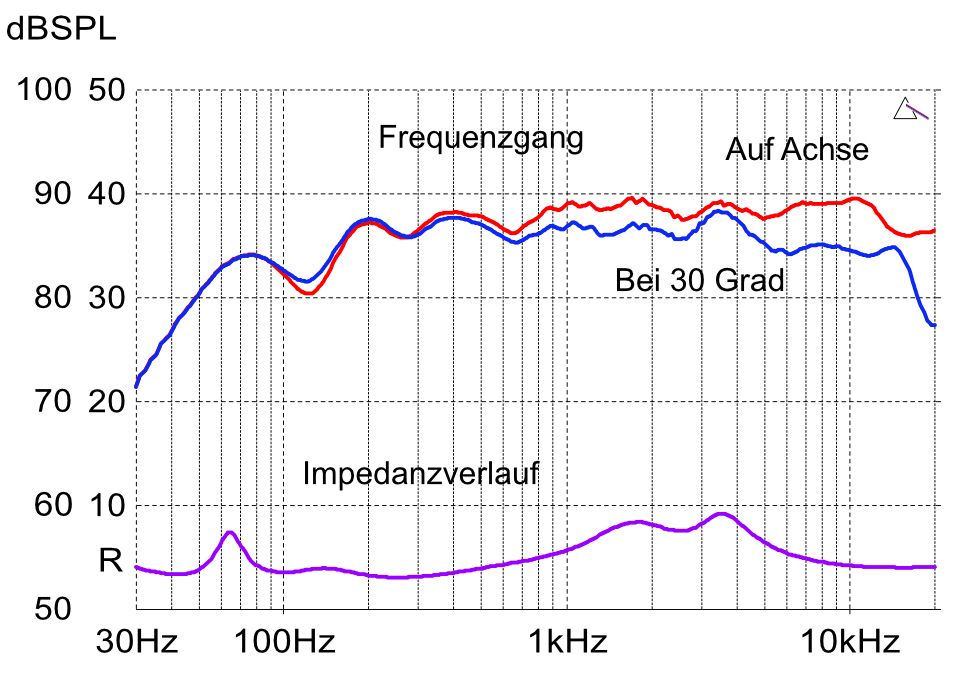
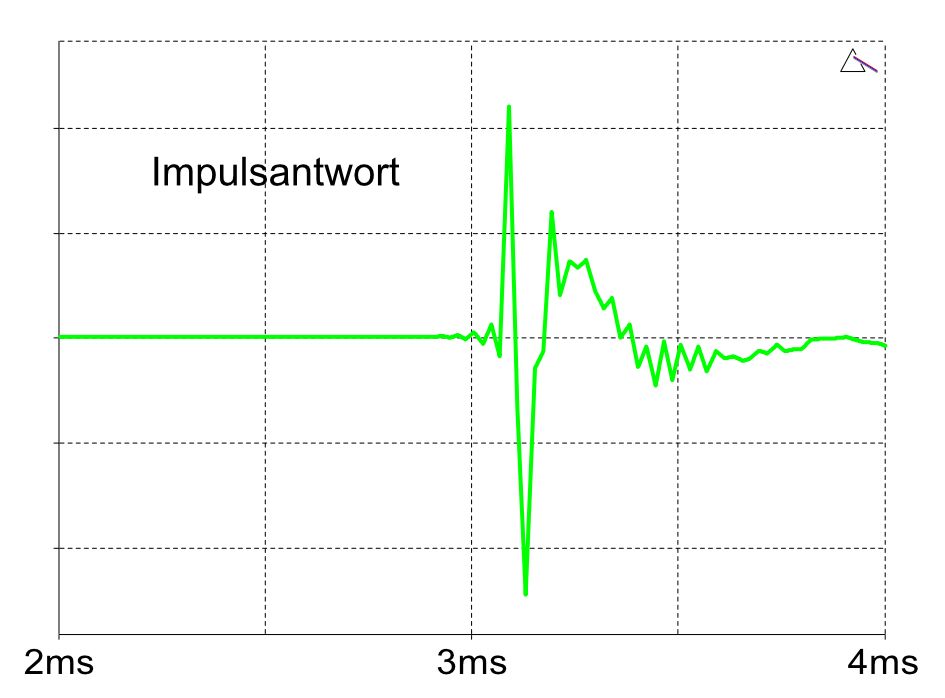
Measurement Values
| Rated impedance at DC: | 4 Ohm |
| Minimum impedance: | 3.26 Ohm |
| Minimum impedance at: | 243 Hz |
| Maximum impedance: | 9.44 Ohm |
| Maximum impedance at: | 3363 Hz |
| Sound pressure characteristic (2.83 V/m): | 89 dBSPL |
| Power for 94 dBSPL: | 6.5 W |
| Lower cut-off frequency (-3dBSPL): | 38 Hz |
| Distortion factor at 63/3k/10k Hz: | 0.35/0.08/0.18 % |
Stereo Test
Sound Level Floorstanding speaker: 77%
Price/Performance
Lab Comment
Linear frequency response, good impulse response, high efficiency and uncritical impedance response; minimal distortion
Features
3.5-way bass reflex speaker with d‘Apollito arrangement of the midrange/tweeter unit; strictly selected drivers and crossover components; WBT-NextGen bi-wiring connectors; base with spikes; cover removable
Test Devices
Streamer:
Bluesound Node
CD Player:
Musical Fidelity M3 si
Integrated Amps:
Exposure 3510, Audionet WATT
Loudspeakers:
Gauder Akustik Arcona 80 MK II SD
Cables:
Ansuz, AudioQuest, HMS
What We‘ve Heard
Ella Fitzgerald – Cole Porter Songbook
Enchanting voice and songs that captivate even non-jazz-fans.

Art Blakey: Moanin'
Rhythmically and melodically gripping jazz. For the island!
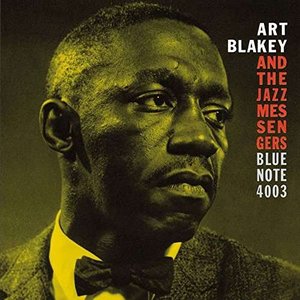
 MAGAZINE
MAGAZINE